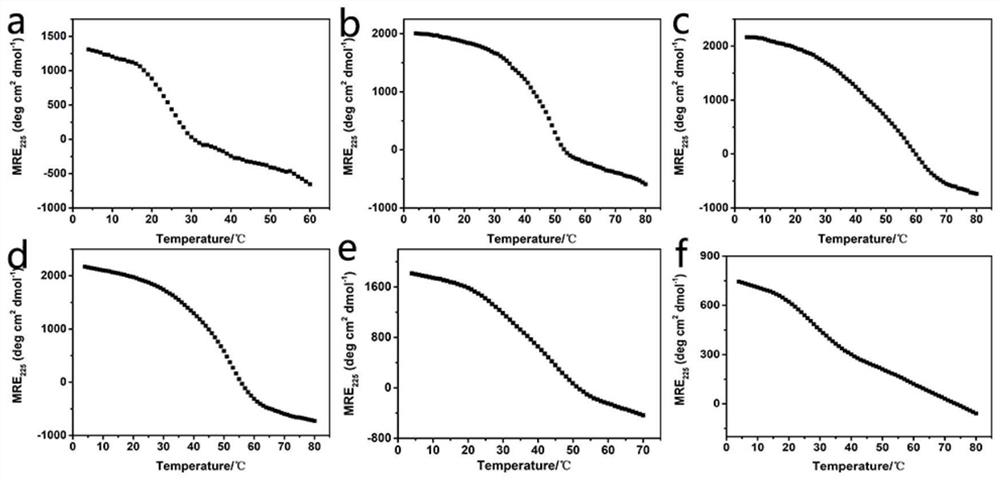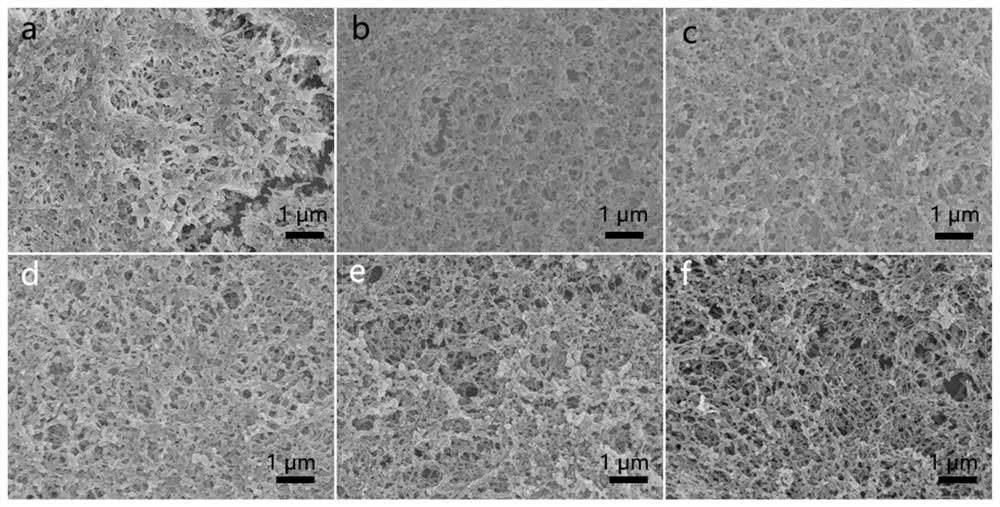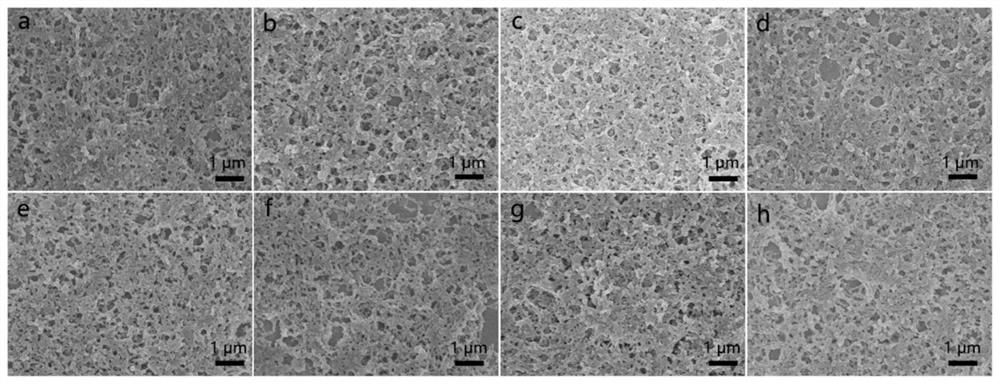Covalent photo-crosslinking polypeptide, and collagen biomimetic material formed by self-assembly of covalent photo-crosslinking polypeptide
A collagen and biomimetic material technology, applied in the field of collagen biomimetic materials, can solve the problems of difficult control of the assembly system, residual toxicity, poor selectivity of cross-linking agents, etc., and achieve mild conditions, good biological functions, and wide clinical application potential. Effect
- Summary
- Abstract
- Description
- Claims
- Application Information
AI Technical Summary
Problems solved by technology
Method used
Image
Examples
Embodiment 1
[0084] Example 1 Covalent photocrosslinked polypeptide YY (GPO) 3 GYO (GPO) 3 Characterization of properties of YY
[0085] 1. Circular Dichroism
[0086] Circular dichroism (CD) spectra were obtained on a Chirascan CD chromatograph (Applied photophysics, England) equipped with a Peltier temperature controller. Under the condition of pH 10, an aqueous polypeptide solution with a concentration of 300 μM was prepared. Samples need to be equilibrated at 4°C for at least 24 hours before taking measurements. Use cuvettes with a path length of 1 mm. The thermal curve is obtained by monitoring the change of the characteristic CD peak at a wavelength of 225nm with temperature, the temperature range is from 4°C to 80°C, and the heating rate is 10°C / hour. The first-order derivative of the thermal curve is performed, and the temperature corresponding to the extremum is the thermal temperature (Tm).
[0087] The result is as figure 1 As shown in a, at 225nm, the covalently photocro...
Embodiment 2
[0092] Example 2 Covalent photocrosslinking polypeptide YY (GPO) 4 GYO (GPO) 4 Characterization of properties of YY
[0093] 1. Circular Dichroism
[0094] Circular dichroism (CD) spectra were obtained on a Chirascan CD chromatograph (Applied photophysics, England) equipped with a Peltier temperature controller. Under the condition of pH 10, an aqueous polypeptide solution with a concentration of 300 μM was prepared. Samples need to be equilibrated at 4°C for at least 24 hours before taking measurements. Use cuvettes with a path length of 1 mm. The thermal curve is obtained by monitoring the change of the characteristic CD peak at a wavelength of 225nm with temperature, the temperature range is from 4°C to 80°C, and the heating rate is 10°C / hour. The first-order derivative of the thermal curve is performed, and the temperature corresponding to the extremum is the thermal temperature (Tm).
[0095] The result is as figure 1 As shown in middle b, at 225nm, the covalently ...
Embodiment 3
[0100] Example 3 Covalent photocrosslinking polypeptide YY (GPO) 5 GYO (GPO) 5 Characterization of properties of YY
[0101] 1. Circular Dichroism
[0102] Circular dichroism (CD) spectra were obtained on a Chirascan CD chromatograph (Applied photophysics, England) equipped with a Peltier temperature controller. Under the condition of pH 10, an aqueous polypeptide solution with a concentration of 300 μM was prepared. Samples need to be equilibrated at 4°C for at least 24 hours before taking measurements. Use cuvettes with a path length of 1 mm. The thermal curve is obtained by monitoring the change of the characteristic CD peak at a wavelength of 225nm with temperature, the temperature range is from 4°C to 80°C, and the heating rate is 10°C / hour. The first-order derivative of the thermal curve is performed, and the temperature corresponding to the extremum is the thermal temperature (Tm).
[0103] The result is as figure 1 As shown in c, at 225nm, the covalently photocr...
PUM
| Property | Measurement | Unit |
|---|---|---|
| heat deflection temperature | aaaaa | aaaaa |
| heat deflection temperature | aaaaa | aaaaa |
| heat deflection temperature | aaaaa | aaaaa |
Abstract
Description
Claims
Application Information
 Login to View More
Login to View More - R&D
- Intellectual Property
- Life Sciences
- Materials
- Tech Scout
- Unparalleled Data Quality
- Higher Quality Content
- 60% Fewer Hallucinations
Browse by: Latest US Patents, China's latest patents, Technical Efficacy Thesaurus, Application Domain, Technology Topic, Popular Technical Reports.
© 2025 PatSnap. All rights reserved.Legal|Privacy policy|Modern Slavery Act Transparency Statement|Sitemap|About US| Contact US: help@patsnap.com



